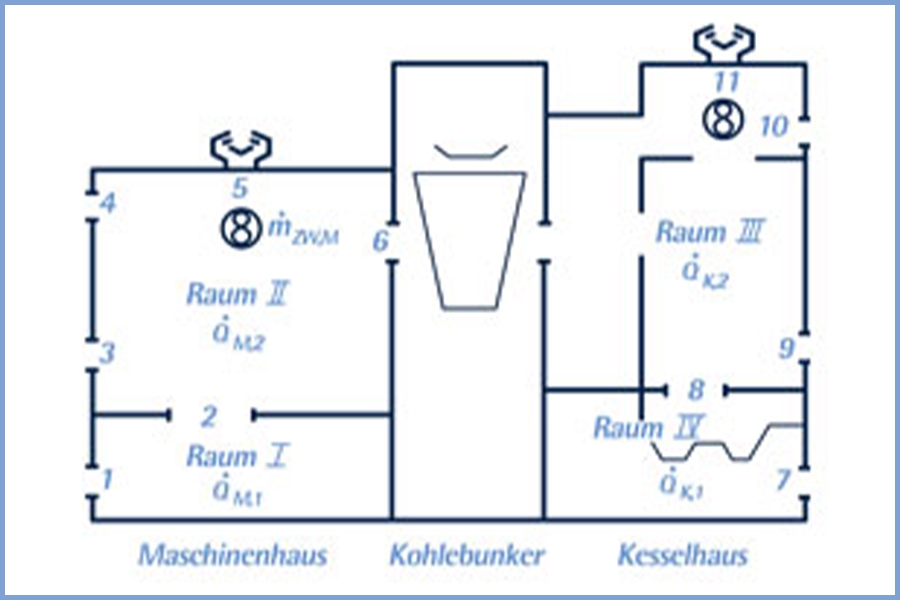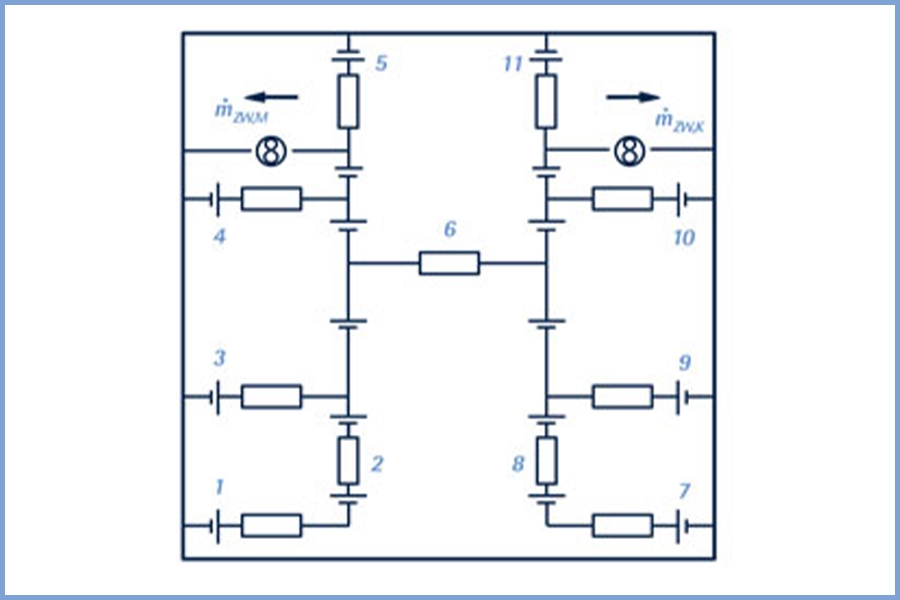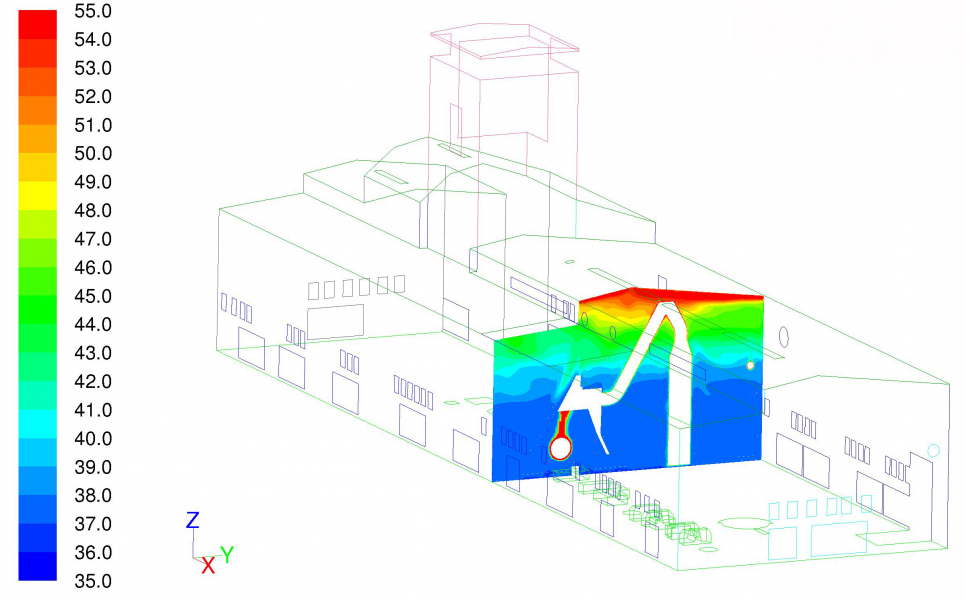DesignThe design work not only includes standard mechanical ventilation processes, but also the following processes for natural ventilation: Single-zone model / multi-zone model The zone model is based on the abstraction of a building as a flow network consisting of zones and flow elements. The zones represent a volume in the building that can be described in terms of pressure, temperature and foreign matter concentration. This dimensioning process enables,
Generally, precise data can be obtained in the dimensioning process on air temperature in the work zone, exhaust air temperature, mass air flows and air velocity, as well as the neutral plane, depending on the values of the above parameters. CFD - Computational Fluid Dynamics The applications for CFD extend from modelling laminar and turbulent internal and external air flows, though the calculation of temperatures, including heat exchange and radiation, to the acquisition of data on of mixing processes, mass transfer and the expansion of concentration fields, such as smoke spread and fire simulation. In order to use CFD models, it is initially necessary to prepare a three-dimensional geometry of the building, including all details that are relevant for air flows. The resulting volume is then divided up into a finite number of small reference units (cells). The number of cells required depends on the size and complexity of the building (and can vary up to more than 10 million cells). The final step is to solve balance equations in respect of momentum, energy, mass and, where applicable, turbulence and gas type for each individual cell. Since the conditions in each of the cells are influenced by the neighbouring cells, the ensuing equation system is iterative. |
|
>55
over fifty-five years of experience
4
appropriate references on 4 continents
800
more than eight hundred projects worldwide
|






